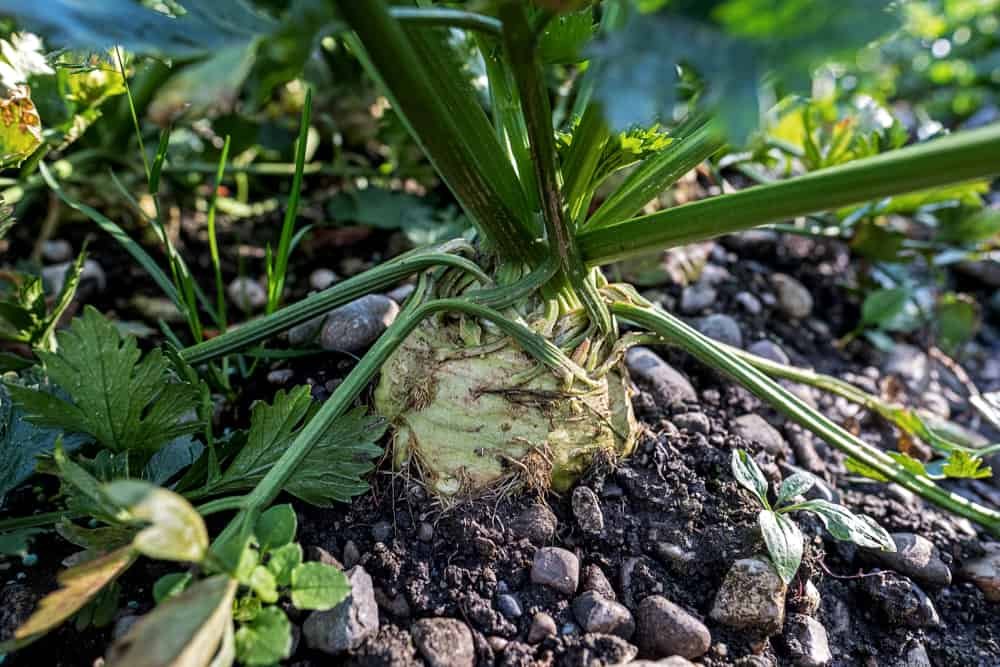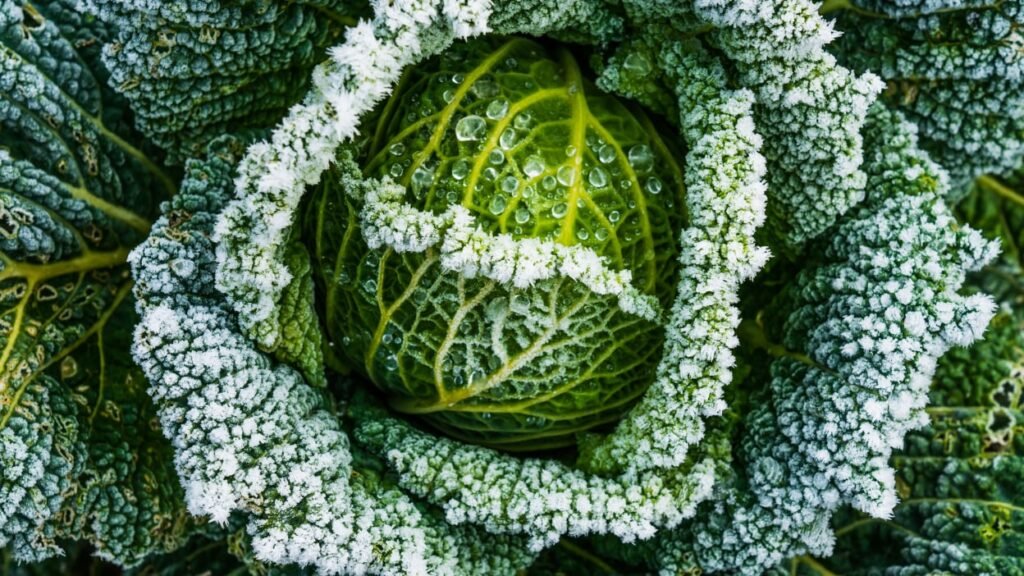Autumn is a magical time for gardeners, not only because of cooler temperatures and colorful foliage but also because many vegetables develop enhanced flavors after experiencing a frost. Frost triggers a natural chemical process in certain plants that converts starches into sugars, resulting in sweeter, more flavorful produce. Understanding which vegetables benefit from frost, and how to manage your garden to maximize these effects, allows you to enjoy superior-tasting harvests late into the season. This article explores eight vegetables that taste better after a frost, why it happens, and tips for cultivating them successfully.
Why Frost Improves Vegetable Flavor

Frost impacts vegetables by initiating biochemical responses within plant tissues:
- Sugar Conversion: When temperatures drop near freezing, plants convert stored starches into simple sugars to lower the freezing point of their cells. This natural “antifreeze” not only protects the plant but also enhances sweetness.
- Cellular Protection: The sugar-rich environment prevents ice crystal formation that can damage cells, allowing vegetables to maintain texture while improving flavor.
- Stress Response: Frost acts as a mild stressor that stimulates the production of secondary metabolites, including antioxidants, which can improve taste and nutritional value.
By leveraging the natural effects of frost, gardeners can enjoy vegetables with deeper, richer flavors than those harvested before cold weather arrives.
1. Kale

Kale is a hardy leafy green that thrives in cool weather and benefits immensely from frost.
- Flavor Change: Frost reduces the bitterness in kale leaves, making them sweeter and more tender.
- Growing Tips: Plant kale in late summer for a fall harvest. Protect young plants with row covers until the first frost.
- Culinary Uses: Sweetened kale is perfect for salads, sautés, and soups.
2. Brussels Sprouts
Brussels sprouts are notorious for their bitter taste when grown in warm weather, but frost transforms them.
- Flavor Change: Frost converts starches to sugars, producing sprouts that are nutty, sweet, and less astringent.
- Growing Tips: Plant early in summer to allow full maturity before winter. Mulch around roots to maintain soil warmth.
- Culinary Uses: Roasted, sautéed, or steamed, Brussels sprouts are at their best after a few light frosts.
3. Carrots

Carrots develop a sweeter taste after frost due to their high starch content.
- Flavor Change: Cold temperatures convert stored starch into sugar, enhancing natural sweetness.
- Growing Tips: Leave carrots in the ground until after the first frost. Mulch heavily to prevent soil from freezing completely.
- Culinary Uses: Enjoy raw, roasted, or in soups—frosted carrots have a natural, candy-like sweetness.
4. Parsnips
Parsnips are often harvested late in the season because they reach peak sweetness after frost.
- Flavor Change: Similar to carrots, parsnips convert starches to sugar, resulting in a rich, nutty flavor.
- Growing Tips: Plant in early spring for a fall harvest, and leave them in the soil until after a frost. They tolerate deep freezes if well-mulched.
- Culinary Uses: Parsnips are delicious roasted, mashed, or added to hearty stews.
5. Spinach
Spinach is another leafy green that improves in flavor with cool temperatures.
- Flavor Change: Frost reduces bitterness and enhances sweetness and tenderness in leaves.
- Growing Tips: Sow spinach in late summer for a fall crop. Use row covers to protect young plants from early frosts.
- Culinary Uses: Frost-kissed spinach is excellent in salads, smoothies, and sautés.
6. Cabbage

Cabbage, particularly winter varieties, develops a sweeter taste after exposure to frost.
- Flavor Change: The cold triggers sugar accumulation, reducing the bitter taste of mature heads.
- Growing Tips: Plant late-summer cabbage for a late-fall harvest. Avoid harvesting too early to allow frost-enhanced sweetness to develop.
- Culinary Uses: Ideal for coleslaw, soups, and braised dishes.
7. Leeks
Leeks are a cold-hardy vegetable whose flavor improves after frost.
- Flavor Change: Frost reduces the sharpness of the stalks, creating a sweeter, milder taste.
- Growing Tips: Plant leeks in spring or early summer and harvest in late fall. Mulching helps protect the roots from freezing.
- Culinary Uses: Perfect in soups, quiches, and sautéed vegetable medleys.
8. Broccoli

Broccoli florets become sweeter and more tender after a light frost.
- Flavor Change: Frost triggers starch-to-sugar conversion, reducing bitterness and improving palatability.
- Growing Tips: Plant broccoli in midsummer for a late-fall harvest. Mulch and protect with row covers to maintain soil moisture and warmth.
- Culinary Uses: Use in stir-fries, roasted dishes, or soups to enjoy enhanced flavor.
Tips for Maximizing Frost Benefits
- Timing Planting: For fall crops, plant early enough to reach maturity before the first heavy frost. Cool-season crops planted too late may not develop sufficient sugars.
- Soil Preparation: Ensure soil is rich in organic matter and well-draining. Healthy soil promotes robust root development and optimal sugar conversion.
- Mulching: Protect crops from extreme freezes with straw, shredded leaves, or other mulch to allow continued growth and sugar accumulation.
- Row Covers: Lightweight frost cloths or floating row covers can moderate cold exposure, protecting tender vegetables while still allowing the beneficial sugar-conversion process.
- Successive Planting: Stagger plantings of frost-tolerant crops to ensure a continuous harvest throughout the fall season.
Additional Benefits of Frost-Enhanced Vegetables
- Improved Nutritional Value: Frost-stressed vegetables often produce higher levels of antioxidants, vitamins, and flavonoids, enhancing their health benefits.
- Enhanced Texture: Frost can make leafy greens more tender and root vegetables firmer and sweeter.
- Extended Harvest: Some frost-hardy crops can be left in the garden longer, providing fresh vegetables late into the season.
- Reduced Pest Pressure: Cooler temperatures reduce insect activity, resulting in healthier plants with fewer pest-related problems.
By understanding the natural responses of vegetables to frost, gardeners can strategically plan planting schedules and harvest times for maximum flavor and nutrition.
Practical Considerations
- Monitor Weather: Keep an eye on frost forecasts to plan harvests and protect vulnerable plants.
- Harvest Timing: Light frosts are ideal for sweetening, but repeated heavy freezes can damage crops. Harvest immediately after beneficial frost exposure for peak flavor.
- Storage: Frost-enhanced vegetables like carrots and parsnips can be stored in cool, humid conditions to maintain sweetness for several weeks.
- Cooking Tips: Frosted vegetables are naturally sweet and often require less added sugar or seasoning when roasted, steamed, or incorporated into dishes.
With careful planning, frost can become a gardener’s ally rather than a threat, transforming ordinary vegetables into culinary delights.
Conclusion
Certain vegetables are uniquely adapted to thrive in cool weather, and exposure to frost often enhances their flavor, sweetness, and nutritional value. Kale, Brussels sprouts, carrots, parsnips, spinach, cabbage, leeks, and broccoli are all examples of vegetables that taste better after frost. By understanding the science behind frost-induced sugar conversion and employing practical gardening techniques such as mulching, row covers, and strategic planting, gardeners can maximize both yield and flavor.
Frost-enhanced vegetables provide a rewarding late-season harvest, allowing gardeners to enjoy fresh, nutrient-dense produce even as temperatures drop. Leveraging frost as a natural flavor enhancer not only elevates culinary experiences but also encourages sustainable, low-maintenance gardening practices. By embracing the advantages of frost, gardeners can transform their fall gardens into a bountiful, flavorful, and resilient food source.
